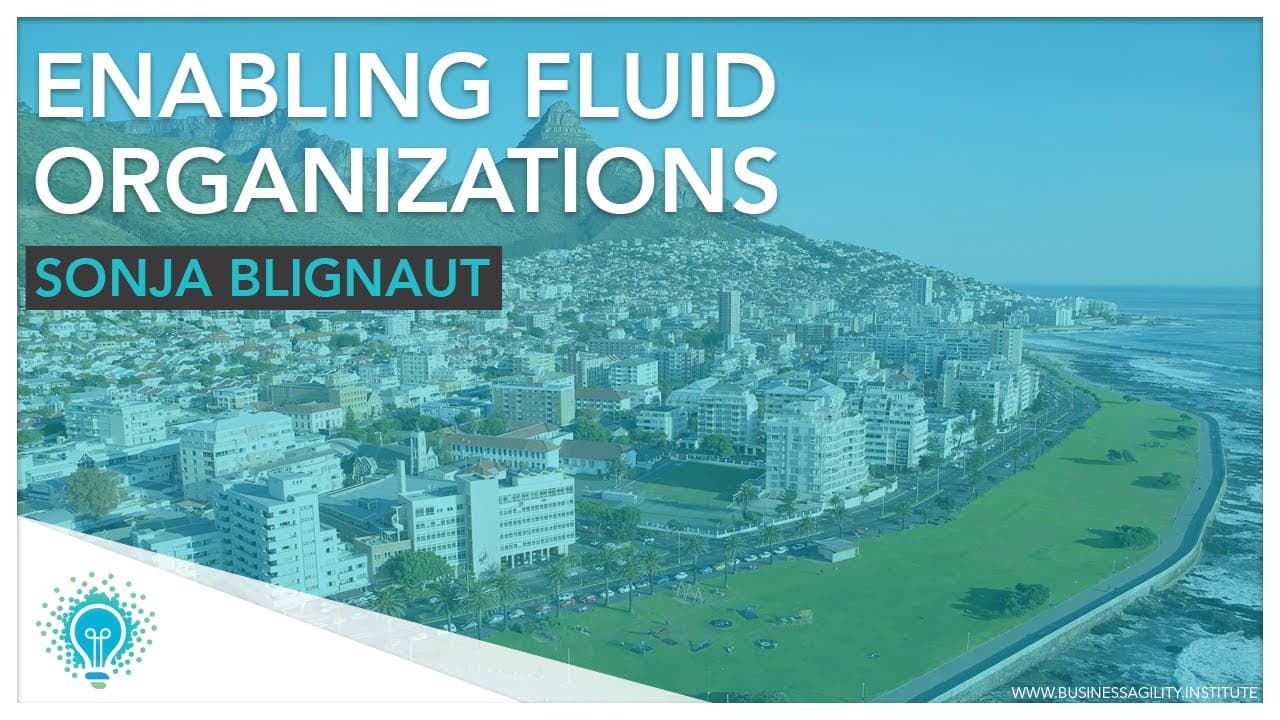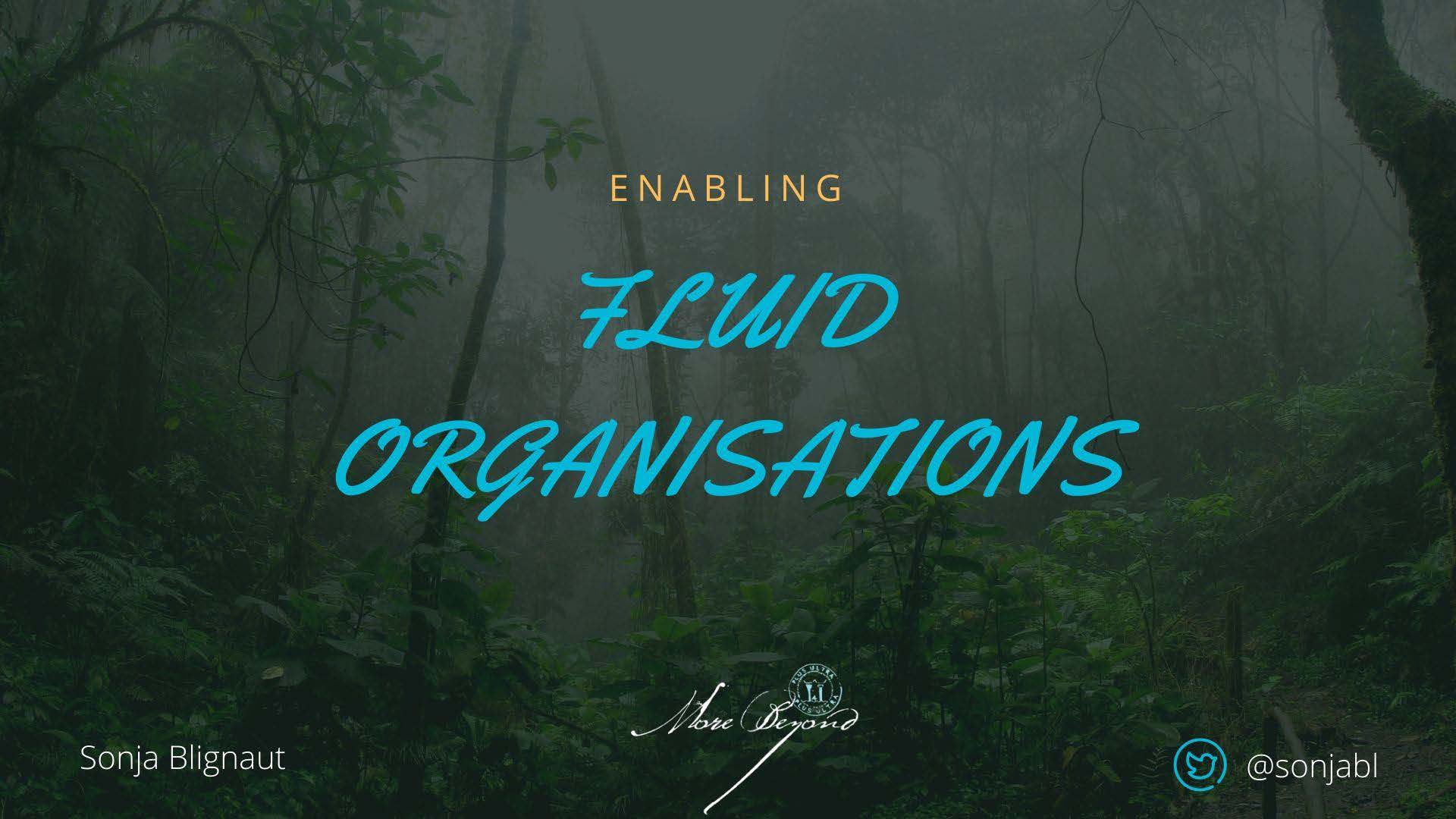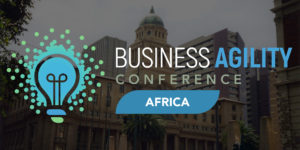Good afternoon! I'm suddenly wishing I had Steven’s energy, but even for the 5%, I don’t think I can match that. Depending on whether your glass is half-full or half-empty, I’m either standing between you and traffic or between you and dinner. So, I hope you’ll cut me some slack.
I’m not going to spend much time introducing myself; I’ll just dive straight in. Maybe just one thing you need to know about me—I come from the natural sciences. I am a meteorologist. Who knows what that is?
Who thinks it’s about space rocks? It always sounds cooler when people think that, but it’s actually about weather. So, I’m going to talk to a bunch of agile professionals from a science and natural systems perspective at almost 5 o’clock in the afternoon. I hope you’re still relatively awake!
Zoo or Jungle?
I wanted to start with something that speaks for itself. I really enjoy writing, and one of my blog posts went viral. A cartoonist in Norway picked it up and drew an image based on it. I find it interesting because I work across multiple domains—agile communities, organizational development, and leadership—but mostly, I apply complexity thinking to all of them.
One of the metaphors I use most often is this: If you think about your organization, does it resemble a zoo or a jungle?
Who says zoo? Who says jungle?
If I change the question slightly—how is your organization structured, like a zoo or a jungle? Most of you would say a zoo. I won’t ask about jungles because that would completely mess up my metaphor if I suddenly discovered many companies structured like jungles!
Changing Behavior vs. Changing the Environment
Most of the organizations where I consult focus on changing people's behavior. Leaders need to be trained to act differently. Employees need to learn new ways of working. Our intervention of choice? Sending them on training programs. At the risk of offending many, we love certifying them. You know, send them to a two-day bootcamp, and they return "agile."
What we don’t consider enough is the environment we send them back into. A metaphor I love using is the contrast between a symphony orchestra and a jazz band. You can train people to improvise, but if you send them back into a symphony orchestra, how welcome will their improvisation skills be?
The Feeling of Uncertainty
Leaders and employees feel uncertain. It’s as if the solid ground they once stood on has disappeared. How many of you resonate with that?
Have you heard of the term VUCA? It stands for volatility, uncertainty, complexity, and ambiguity. It’s not a new concept—it originated in the 1980s—but it has become a lived experience, which is why it has gained more attention in recent years.
One of the main reasons people feel uncertain is that we don’t fully understand complexity.
Complicated vs. Complex
We are familiar with complicated problems. The word "complicated" comes from "plic," meaning "folded." That means a complicated problem can be unfolded, understood, and solved. These problems are predictable, and we can create recipes to solve them repeatedly.
But we now deal with complex systems. "Complex" comes from "flex," meaning "woven together." These systems are not simply folded; they are entangled. No matter how much we try to "unfold" them, we will never fully figure them out, and recipes will not work.
We love certainty, but the reality is that complexity is increasing. The more connected we become, the more complex the world gets. Just think about social media—instant connections create more complexity. The volatility, uncertainty, and ambiguity of VUCA are all driven by complexity.
The Search for Certainty
We have outsourced our relationship with uncertainty to "certainty merchants." Industries like insurance thrive on this. Leaders are expected to be certainty merchants, as are change managers. But in reality, we need to befriend uncertainty—it’s how the world works.
We all know that when we step outside, we can’t predict exactly what will happen. Yet, when we enter the workplace, we suddenly expect certainty, predictability, and three-year plans. This is not how the world works.
We Are Optimized for a Vanishing World
We are perfectly optimized for a world that is disappearing. We love linear processes, especially in change management. How many of you have used linear change models? No hands? Oh, there we go!
There’s nothing inherently wrong with these models, but they must be applied in the right context. I once saw a cartoon of the Kübler-Ross grief curve. In theory, it looks neat and predictable, but in reality, it’s chaotic. The same applies to change. We act as if uncertainty doesn’t exist, but it does.
Reframing Organizations as Flow Systems
Our organizational structures shape us, and we need new lenses to look at them differently. One of those lenses is complexity, but another is flow.
Who here works with value streams, Kanban, or Lean? Flow is a major topic in these areas, but I believe we need to think even more broadly.
Everything is Flow
Human life is flow. We age—we flow through time. Organizations do the same. We move through space. Breathing is flow. Blood circulation is flow. Traffic is flow (sometimes). Even conversations are flow.
What if we saw organizations as flow systems?
Compare a corporate hierarchy to a natural flow system—like tree branches or river networks. Natural systems optimize for flow. Hierarchies are not inherently bad—they emerge naturally. The real question is: How do we create adaptable hierarchies?
Redefining Constraints
Constraints are not necessarily limits—they enable flow. Imagine driving without road rules—chaos! Similarly, in organizations, constraints can guide flow rather than block it.
Think about a menu at a restaurant. If there are too many options, it becomes overwhelming. Give me constraints, like a decade or a genre, and I can pick my favorite song. Without constraints, decisions become paralyzing.
Swindon’s Magic Roundabout
Let’s consider Swindon’s famous "Magic Roundabout." Unlike traditional traffic lights, this system allows traffic to flow in multiple directions simultaneously. It may look chaotic, but it’s efficient.
The roundabout wasn’t planned in advance; it was built experimentally by adjusting constraints until it optimized flow. What if we designed organizations the same way?
Managing Constraints, Not Being Constraints
The main role of management should be to manage constraints, not be constraints. How many of you have worked with managers who act as constraints themselves?
Leadership should focus on creating an environment where flow can self-optimize. When given freedom, flow systems will generate better configurations.
The Toyota Flow System
I’ve been working with Nigel Thurlow, former Chief of Agile at Toyota Connected, on the Toyota Flow System. It focuses on complexity thinking, distributed leadership, and team science.
We often tell employees to "collaborate" and "be a team player," but have they ever been taught how to "team" as a verb? We need processes that enable the behavior we expect.
Final Thoughts
In complexity, answers are transient, but questions remain useful. I’ll leave you with a few questions to take back to your organizations:
- Beyond work and cash flow, what else needs to flow in your organization?
- Do constraints in your organization enable or block flow?
- Does a lack of constraints cause key flows to dissipate?
- Do your constraints create enough cohesion to make people feel safe?
I hope this broadened your thinking about flow. Thank you, and I welcome any questions!





